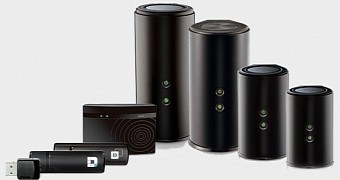Intel and many other companies have been waxing poetically about the Internet of Things for months now, but even with the promise of “no cables needed by 2016,” it's still something that most people probably don't think can be implemented immediately.
Granted, we can't just grab a little dart gun or blowpipe and just aim at our chair or over in order to grant them web connectivity, but the technology to otherwise make it happen already exists.
In fact, it not only exists but it is cheap enough that we could probably start churning out IoT-ready appliances, rugs, baubles and everything else you can think of starting tomorrow.
Now I know that some will skeptically give me the eyebrow, despite everything we've seen this year at trade shows. They may even (somewhat rightly, I'll admit) believe that IoT won't be achieved by 2020 or even later, no matter the optimism of corporations.
Well, I'm Jack Ryder and you are wrong! Why? Let me tell you my friend.
Comic book references aside, the world already does possess every technology needed to wirelessly connect everything in a house to the network, and through it, to a web-based server.
For one thing, processors have had the required processing and efficiency for decades now. For another, Wi-Fi sensors have been small and unobtrusive for years.
More importantly, Samsung has just announced 60 GHz Wi-Fi technology, which can boost performance by a factor of five compared to what we use right now.
Even without it, 2.4 GHz and 5 GHz bands were already more than capable of handling the strain, even though EM interference is still an issue with them.
That 3D Scanner with 10 Micrometer precision from a range of 10.5 meters / 34 feet is another interesting invention, although admittedly a fairly expensive one for consumers. It can give you gesture control over your house even if you're out in the yard, or across the street, assuming it's positioned above the front door or nearby somewhere.
Just a short time ago, though, a certain pair of researchers revealed the biggest surprise of them all: 3D printed wireless sensors that are so cheap and easy to make that they're as disposable as paper bags, or the equivalent in high-tech terms.
With the ability to take independent readings and send information over Wi-Fi built into them, they could, in a way, give everything in your home, from your tabletop to the vase on the counter, some surveillance capabilities at the very least. Door handles could pick up on possible conditions from repeatedly reading the chemical composition of your sweat, for instance.
Why IoT isn't actually happening yet
The familiarity of humans with what they already have and have had for years is one reason. The lack of an actual need for web-connected shoes and door handles is another.
There's also the whole bureaucratic red tape associated with changing the inherent makeup of standard consumer electronics and PCs.
And, of course, there's the cloud server limitations. Lots of them have to be created and turned online before IoT starts scaling, otherwise the sudden rise in sheer traffic will crash the Internet. Not a pleasant thought, considering how important it has become for everything nowadays.
I'm not even going to mention the security nightmare that every one of those hackable cloud-based systems, accounts and even individual Wi-Fi connections will cause.

 14 DAY TRIAL //
14 DAY TRIAL //